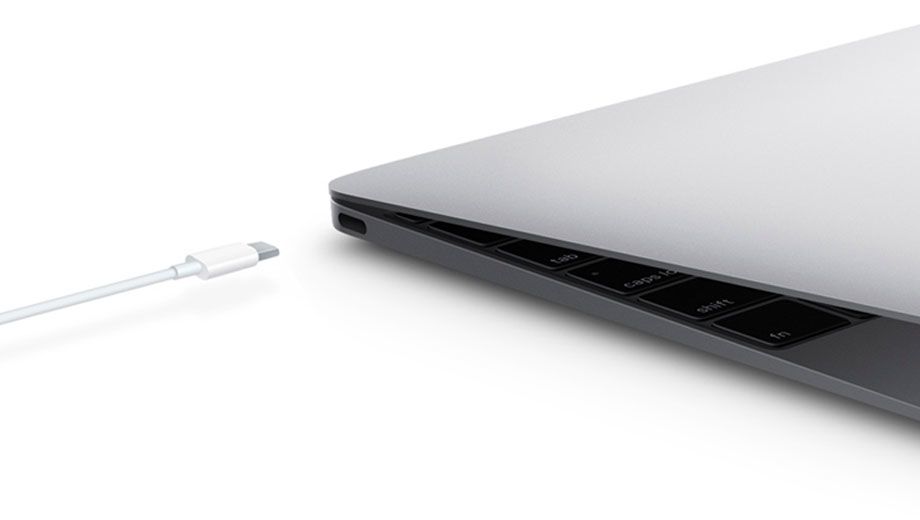Apple, Google lead the push for 'universal' laptop charger

Apple and Google are leading the push towards a standardised charger which could power any laptop, regardless of which brand name it carries.
Both companies have this week unveiled new notebooks which adopt the new USB Type-C connector in place of a conventional power socket which typically varies between laptop makers and even models.
Apple led the charge on Tuesday with its new super-slim MacBook while and Google followed overnight with the launch of the Chromebook Pixel 2, and also announced that future editions of its flagship Nexus smartphones and tablets would use the same plug.
While USB Type-C is saddled with a uninspiring name that begs to be replaced with something cooler and more mainstream-friendly, the technology itself will prove a Godsend to road warriors.
The single plug and cable is capable of charging a laptop, providing high-speed USB connectivity and also streaming HD video HD to an external monitor.
USB Type-C uses a compact connector roughly the same size as a micro-USB or Apple Lightning plug, but unlike previous USB connectors it's reversible, so there's no need to flip it over and over while trying to make it fit any particular device.
Replacing the riot of manufacturer-specific laptop chargers and power sockets with a single universal plug is something which Intel and several industry bodies have been championing for years.
Many business travellers can attest to the frustration of having to hunt around for expensive and sometimes hard to find chargers for their brand of laptop when the original charger and cable are either lost in transit or left at home.
Apple's adoption of USB Type-C (won't somebody please give this tech a sexier name, and soon?) is particularly significant because the company has previously relied on proprietary connectors such as the MacBook and MacBook Air's MagSafe.
However, Apple's decision to add just one USB Type-C port to its new MacBook has attracted plenty of criticism because it will force most customers to buy add-on expansion dongles if they want to connect a USB drive or devices such as 4G/3G modems while the laptop is charging.
Google has more wisely fitted two USB Type-C connectors to the Chromebook Pixel 2, along with a pair of regular USB 3 sockets.
We'll be watching the next wave of Windows-powered notebook and ultrabook releases with great interest, to see if the likes of Dell, HP, Lenovo, Toshiba and other leading laptop brands also make the switch from brand-unique power sockets to what we hope will become the new standard of USB Type-C.
Now, about that name...
Follow Australian Business Traveller on Twitter: we're @AusBT



Qantas - Qantas Frequent Flyer
10 Jan 2013
Total posts 698
I think it helps to remember that while Apple market this as a laptop, it really is the MAX iPad concept the tech press were speculating was being developed. In that sense it's sort of niche - you want something smaller/lighter than a MacBook Air but bigger than an iPad with fixed keyboard. To fit that iPad like portability, obviously heaps of ports aren't possible (just like the iPad), so you get a jack of all trades one.
I like the USB-C for it's technical improvements but honestly it seems to me that people won't be trading their MacBook Pro or even their MacBook Air in (for some) for the new MacBook, as it's not a replacement for the Pro and even the Air is somewhat segmented by it's processor from the new MacBook.
It seems to me to be an upgrade path for those with tablets and tablet hybrids, rather than the existing laptop crowd.
Qantas - Qantas Frequent Flyer
17 Aug 2012
Total posts 2204
It's a laptop to counter the Surface Pro 3.
Qantas - Qantas Frequent Flyer
10 Jan 2013
Total posts 698
Yes, I think that is the segmentation.
Malaysia Airlines - Enrich
11 Oct 2012
Total posts 19
You're right. I currently use a Mac Air 13" and Macbook 15" (other than my work PC laptop) and I can't see myself "downgrading" to the new Mac Air 12".
First of all my Mac Air 13 is just the perfect size, I didn't get the 11" because it was too small and 12" would be small for me.
I feel (and justifiably so) Apple would release a 13" "big brother" to the new Mac Air with possibly two USB Type C connections.
I also don't get the comparison to IPad Air because the new Mac Air doesn't have a touch screen. Its not designed to be an iPad replacement.
Have to say the Surface Pro is mega cool as well.
Qantas - Qantas Frequent Flyer
10 Jan 2013
Total posts 698
If it was made a touchscreen it would have to be thicker, thereby defeating the design brief. It was a trade-off. As the tech press reported, the origins of the project came from development of a large scale (two handed) iPad (rumours of which circulated for the last couple of years).
It's nomenclature is seperate from both the MacBook Air and the MacBook Pro. It sits in a standalone category just called MacBook. It is neither a replacement for an iPad nor a MacBook Air or Pro, but provides an upgrade path for those wanting something bigger than an iPad and somewhat more versatile (due to full OS), but still very trim form factor.
Qantas - Qantas Frequent Flyer
05 Jun 2014
Total posts 210
Surprised apple is leading this as they have long been making their own connectors and forcing customers to buy their overpriced adapters. When have I ever in the last decade been able to connect my mac to a VGA projector without a $40 adapter. But good on them and I hope this takes off :)
Qantas - Qantas Frequent Flyer
17 Aug 2012
Total posts 2204
It means you have to buy a new adapter for USB-C, and also you need to buy multi-adapters for your dongles. What's not to love? /sighs
Hi Guest, join in the discussion on Apple, Google lead the push for 'universal' laptop charger